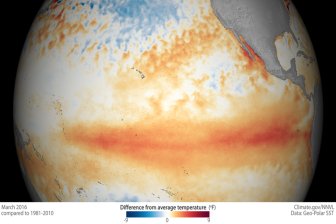Whale researchers in Washington state say they’re concerned about the fate of two critically endangered southern resident killer whales, which haven’t been seen for several months.

All three pods of southern resident orcas, a population which numbers just 74 adults in total, were spotted last week after an unusually long absence.
But the Centre for Whale Research says orcas J17 and K25 were not observed among them.
Back in January, the centre had warned that the two killer whales appeared emaciated, with J17 displaying signs of “peanut head” — a misshapen head and neck associated with starvation.
At the time, it said the two could be dead by summer.
Now, after two recent observations of the three southern resident pods, researchers are worried that their worst fears may have come to pass.
“We managed to photograph every member of J Pod and every member of K Pod. With the exception of J17 and K25, the two emaciated looking whales, which is quite concerning,” said Michael Weiss, a biologist with the Centre for Whale Research.
“We haven’t had enough of a chance to really be sure we’ve gotten everybody yet, you know, do some really thorough surveys. We really need to see it multiple times before we can fully, officially declare whales deceased.”
K25 is a 27-year-old male, who would have a limited effect on the pod’s breeding, while J17 is a 42-year-old female — likely past her breeding age, Weiss said.
WATCH: Southern resident Orcas late in returning from California

But he said the loss of an experienced, older female could still have a devastating effect on the endangered orcas.
“Even though she probably wouldn’t be reproducing anymore, these whales are really dependent on these old, post-reproductive females to find food, for their ecological knowledge when times are hard,” he said.
“Especially when there’s not a lot of fish, they’re really following these older females to to find areas of high salmon abundance and survive.”
Southern resident orcas depend primarily on Chinook salmon for food, and researchers believe dwindling stocks of the fish are a key factor behind the decline of the endangered population.
There have been two calfs born to the southern residents this year, but experts say orca calf mortality traditionally sits around 50 per cent; among the southern residents, it has been 100 per cent for the last three years.
Should J17 and K25 be confirmed dead, it would leave the southern resident adult population at just 72 animals.




Comments